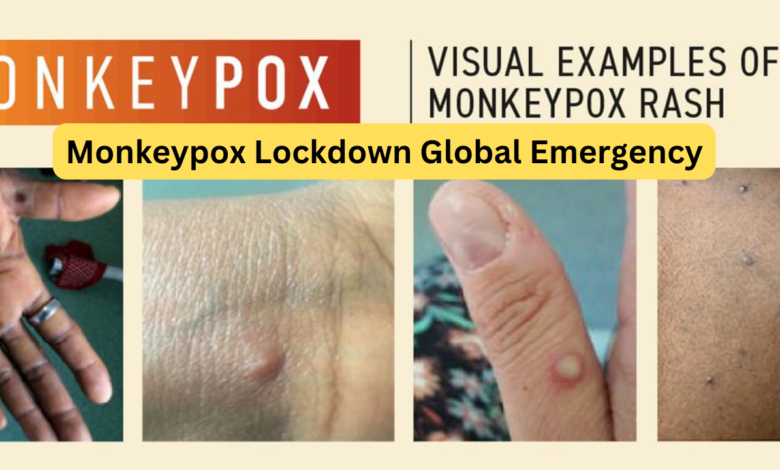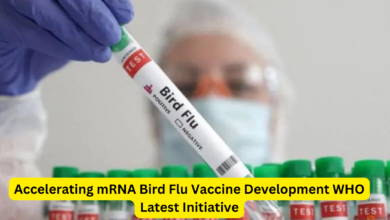Monkeypox Lockdown

Monkeypox Lockdown Global Emergency, The recent escalation of monkeypox cases has triggered a global response, highlighting the virus’s potential to cause widespread health crises. This comprehensive analysis delves into the ongoing monkeypox lockdown, examining its implications, global reactions, and the measures being taken to manage and contain this outbreak.
Understanding Monkeypox: Origins and Characteristics
Monkeypox is a rare but notable viral zoonosis, first identified in monkeys in 1958, and subsequently found in humans in 1970. The pathogen responsible for this disease is the monkeypox virus, which belongs to the Orthopoxvirus genus—this group also includes the smallpox virus. While monkeypox is generally less severe than smallpox, it poses a significant health threat due to its capacity for human-to-human transmission and its potential to cause widespread outbreaks.
The disease is characterized by its various stages of symptoms and its zoonotic nature, meaning it can jump from animals to humans, primarily through direct contact with infected animals or contaminated materials.
The Current Global Situation: Surge in Cases
In recent months, monkeypox has surged globally, prompting the World Health Organization (WHO) to declare a state of emergency. Several factors contribute to this increase:
- Transmission Patterns: Changes in the virus’s transmission dynamics have led to higher infection rates.
- International Travel: Increased global mobility has facilitated the spread of the virus across borders.
- Virus Mutation: The virus’s ability to mutate has potentially enhanced its transmissibility.
Recent data show that confirmed monkeypox cases have exceeded several thousand, with significant outbreaks reported in Europe and the Americas. This surge has placed considerable strain on public health systems and necessitated a reassessment of existing containment strategies.
Transmission and Symptoms: Identifying the Virus
Monkeypox transmission primarily occurs through contact with infected animals such as rodents and primates. Human-to-human transmission can occur via respiratory droplets, direct contact with bodily fluids, or contaminated materials.
Symptoms of Monkeypox
The symptomatology of monkeypox includes:
- Fever: Often one of the first indicators of infection.
- Headache: Commonly experienced along with other symptoms.
- Muscle Aches: General discomfort and body aches are prevalent.
- Backache: Lower back pain is reported frequently.
- Swollen Lymph Nodes: Notable swelling in lymph nodes.
- Chills and Exhaustion: Significant fatigue and chills.
- Rash: A hallmark feature, which progresses from macules to papules, vesicles, pustules, and finally scabs.
Government and Health Organization Responses Monkeypox Lockdown
In response to the escalating monkeypox crisis, governments and health organizations worldwide have implemented a range of measures aimed at controlling the outbreak.
Lockdown Measures
Travel Restrictions
Many countries have imposed travel bans and restrictions to limit international movement and prevent the further spread of monkeypox. These measures aim to control the cross-border transmission of the virus.
Quarantine Protocols
Mandatory quarantine has been enforced for individuals exposed to monkeypox or showing symptoms. This measure is critical in preventing the virus’s spread within communities.
Public Health Campaigns
Health authorities have launched extensive educational campaigns to raise public awareness about monkeypox. These campaigns focus on symptoms, transmission methods, and preventive measures to equip individuals with the knowledge to protect themselves.
Vaccination Efforts
Vaccination is a key component in controlling monkeypox outbreaks. Although no specific vaccine for monkeypox exists, the smallpox vaccine has demonstrated cross-protection against the virus. Health organizations are prioritizing vaccination for high-risk groups and frontline health workers to enhance immunity and reduce transmission.
Treatment and Care
Currently, there are no specific antiviral treatments for monkeypox. Management focuses on supportive care, including:
- Hydration: Ensuring adequate fluid intake to maintain hydration.
- Pain Relief: Administering medications to alleviate pain.
- Treatment of Secondary Infections: Addressing any secondary bacterial infections that may arise.
In severe cases, antiviral medications such as tecovirimat, typically used for smallpox, may be administered under special circumstances.
Challenges and Future Directions
Challenges in Containment
Despite the concerted efforts, several challenges persist in containing the monkeypox outbreak:
- Limited Vaccine Supply: The global availability of smallpox vaccines is insufficient to meet the demand, causing delays in vaccination efforts.
- Public Awareness: Increased public education is necessary to combat misinformation and enhance understanding of monkeypox.
- Healthcare Infrastructure: The surge in cases has highlighted the need for stronger healthcare infrastructure and resources to manage the outbreak effectively.
Future Outlook
The global response to monkeypox will require sustained coordination among governments, health organizations, and the public. Key future actions include:
- Ongoing Surveillance: Continuous monitoring of the virus’s spread and evolution.
- Research and Development: Advancing research to develop targeted vaccines and treatments.
- Strengthening Health Systems: Enhancing healthcare infrastructure to cope with current and future health crises.
Impact on Global Health Systems
The monkeypox outbreak has placed unprecedented pressure on global health systems, revealing significant vulnerabilities in pandemic preparedness and response. Countries with under-resourced healthcare systems have faced immense challenges in managing the surge in cases. Hospitals and clinics are struggling to handle the increased patient load, and the demand for medical supplies and personnel has skyrocketed. The crisis underscores the need for substantial investments in healthcare infrastructure, including the development of rapid-response teams and robust disease surveillance systems. Strengthening these areas is crucial for improving resilience against current and future outbreaks, ensuring that health systems can effectively respond to emerging threats.
Economic and Social Implications
The monkeypox lockdown has also had notable economic and social repercussions. The imposition of travel restrictions and quarantine measures has disrupted global supply chains, affecting industries such as travel, tourism, and retail. Businesses, particularly small and medium-sized enterprises, are experiencing financial strain due to reduced consumer activity and operational interruptions. Additionally, the social impact includes increased anxiety and stress among populations, exacerbated by the uncertainty surrounding the virus and its containment. Governments and organizations need to implement support mechanisms to mitigate the economic fallout and provide mental health resources to help individuals cope with the psychological effects of the pandemic.
International Cooperation and Future Preparedness
Addressing the monkeypox outbreak highlights the importance of international cooperation in managing global health crises. Collaborative efforts between countries, health organizations, and research institutions are essential for sharing information, resources, and best practices. Strengthening global health governance frameworks and enhancing cross-border coordination can facilitate more effective responses to future pandemics. Investing in research and development for vaccines, treatments, and diagnostic tools is also vital for improving preparedness and response capabilities. By fostering a unified global approach and leveraging collective expertise, the international community can better safeguard against future health emergencies and minimize their impact on global populations.
Conclusion
The monkeypox lockdown underscores a significant global health challenge with wide-reaching implications for public health, international travel, and healthcare systems. Addressing this emergency necessitates a comprehensive and coordinated approach, including effective containment measures, vaccination efforts, and public education. By understanding the dynamics of the virus and implementing strategic responses, the global community can work towards managing the outbreak and safeguarding health on a global scale.
Latest to Read Click Here





One Comment